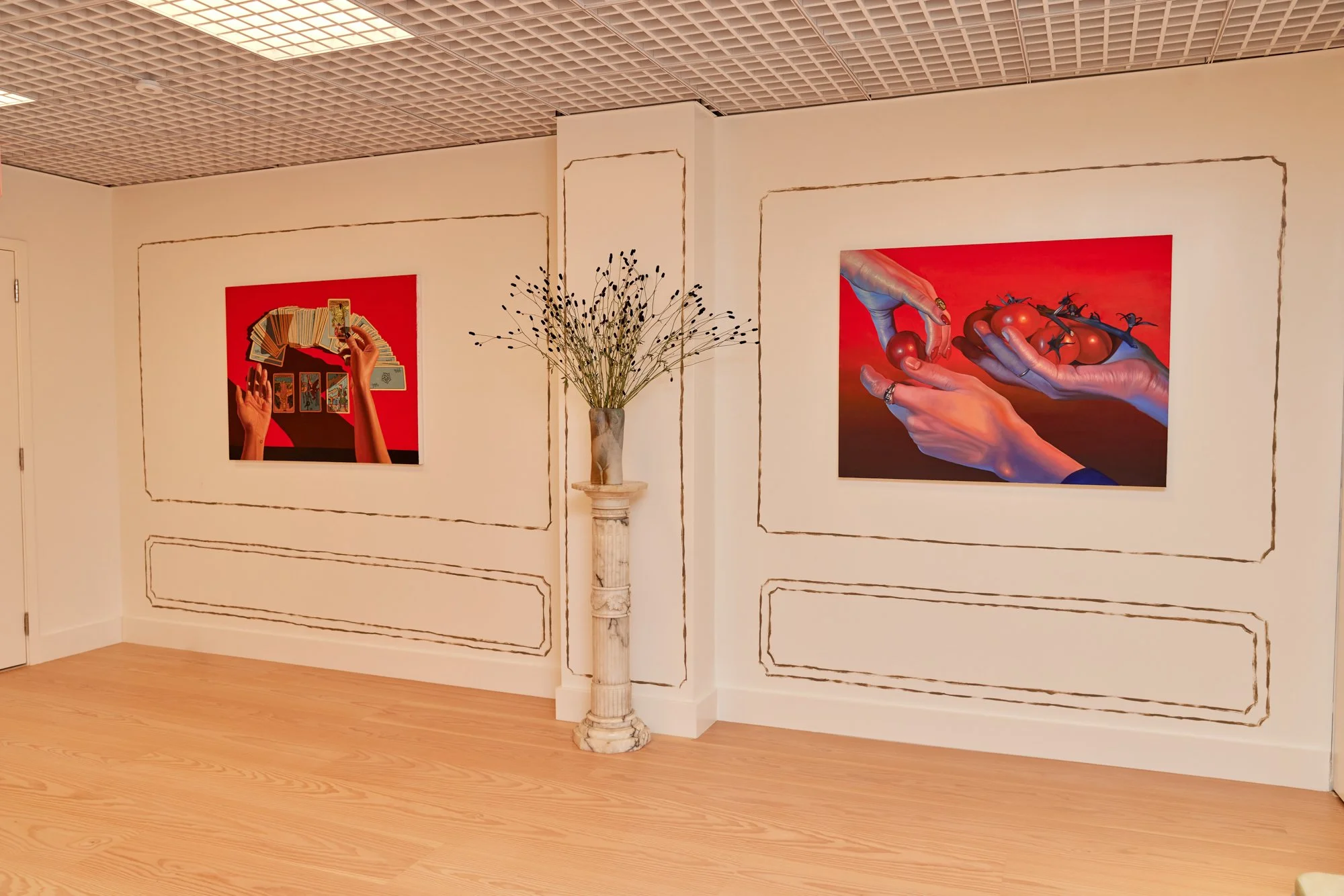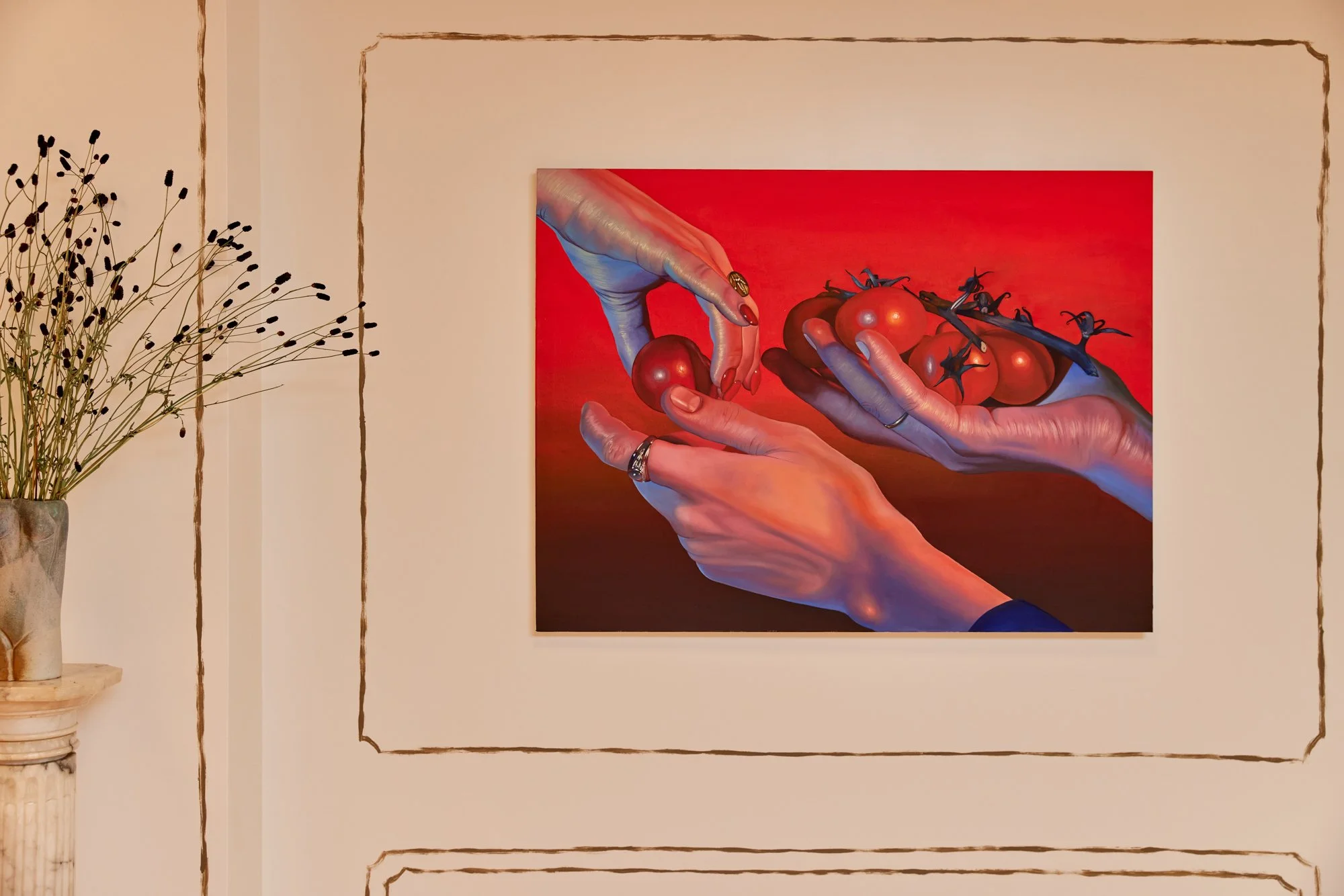Vignette
September 12 – October 31, 2025
161 Water Street, Suite 2703, New York, NY
Salon 21 is pleased to present “Vignette,” a group exhibition, opening to the public on September 12, 2025. This exhibition will be Salon 21’s first in its new location at Water Street Associates (WSA) in the Financial District. The group show includes works by Ben Cowan, Allyson Keehan, Thérèse Mulgrew, and Carly Owens Weiss.
“Vignette" brings together four contemporary painters whose practices embrace the materiality of paint while reimagining the quiet power of stillness, symbolism, and personal narrative. Through hyperrealism, art historical references, and investigations of the body, the works in this exhibition elevate the overlooked, such as objects, gestures, textures, into richly constructed vignettes that confront the complexities of identity, memory, and representation.
About the Artists
-
Ben Cowan is a painter based in Brooklyn, NY. He received a BFA from the School of the Art Institute of Chicago and an MFA from Indiana University. His series of framed paintings (created with hand-built, window-like frames adhered to the canvas made from aqua-resin) feature isolated hands, eyes, and symbolic ascensions, examining how personal objects and religious iconography form poetic systems of meaning within daily life.
Cowan’s paintings exist at a playful crossroads of object, illusion, and the transcendence that arises from devoted observation and perception. His work explores the mystical concept of a paracosm: an imagined world rendered so vividly that it feels real. Drawing inspiration from urban landscapes and Gothic architecture, Cowan handcrafts sculptural framed surfaces, merging observed locations, personal artifacts, and references to art historical abstraction. These elements come together to create paintings that blur the line between reality and illusion, embodying both the interpersonal and the supernatural.
-
Allyson Keehan is an Irish artist based in Glasgow, UK. She holds a PhD in Fine Art from the Glasgow School of Art and an MFA from Byam Shaw School of Art, UAL. Her work explores the expanded field of painting through the lens of motherhood.
Rooted in feminist theory and material exploration, Keehan’s paintings incorporate pink silk drapery painted on reclaimed wood from the historic Hunterian Museum. Veiling, framing, and the idea of the female body as vessel recur throughout her work, where texture and artifice blur boundaries between surface and depth, self and symbol. Looking closely at veiling and artifice, her practice incorporates drapery and framing to create complex structural experiences of real and imaginary spaces. Drapery has a wealth of history relating to painting and these propositions amplify the experience of viewing and understanding.
-
Thérèse Mulgrew is a painter based in Chicago, IL. She holds a BA in English Literature and studied at The Art Students League and New York Studio School of Painting, Drawing, and Sculpture. Influenced by her mother's surreal oil paintings and her grandmother's impressionist still lifes, she began to cultivate her own style which focuses mainly on depicting large-scale portraits and nostalgic still life in oil paint.
With a background in fashion photography and a deep appreciation for painterly intimacy, Mulgrew presents hyper realistic scenes that look like they were photographed in a studio with artificial lighting. The way she uses paint to trick the eye evokes the tradition of vanitas paintings in a way that feels both timeless and extremely current. Her paintings represent an attempt to explore vulnerability and intimacy. Inspired by cinema and photography, she works with a filmmaker to ensure her series mimic the experience of watching a short film - each painting acting as a still fleeting moment but when 3 viewed all together, reveal a more broad and deep narrative.
-
Carly Owens Weiss is a multidisciplinary artist based in Boulder, Colorado. She holds a Bachelors of Art and Design from North Carolina State University and a degree from the Royal School of Needlework in the UK. She is interested in the violence of contrasts and navigating the emotional responses that arise from the juxtaposition of the familiar with the unusual, the mundane with the irrational. Referencing art history through a feminist and psychological lens, Owens Weiss recontextualizes vanitas tropes to address modern anxieties around gender, selfhood, and the body.
Her homage to Ingres' “Grande Odalisque" in grisaille, alongside intimate studies of hands, textiles, and vegetation, evoke the push-pull between seduction and alienation. In her paintings, she draws parallels between objects, the body and the experiences lived within it to create contemporary vanitas imagery that discusses modern anxieties through antiquity. Her practice focuses on the recontextualization of imagery present within the art historical canon.



